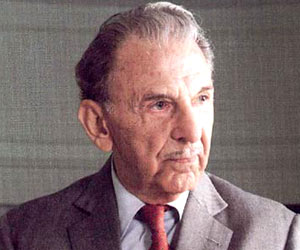by FP Staff Jan 10, 2014
After missing several deadlines in past three years and incurring over 32 per cent cost escalation, the new international terminal (T2) at the Mumbai airport is all set to be inaugurated today, promising to provide fliers a whole new experience with its features.
The financial capital can now boast of an airport at par with the best in the world, from gardens and fountains to multilevel car parks, the T2 at GVK Chhatrapati Shivaji International Airport has much to show off.
Chanderbhan Manwani, Project Head- Senior Vice President GVK told CNBC- TV18, "This airport has set its own benchmark. People will measure other airports in comparison with Mumbai now."
Prime Minister Manmohan Singh will dedicate the terminal, a spanking four-storey glass marvel, whose design has been inspired by a dancing peacock, to the nation. However, the actual operations at the terminal is likely to commence from February. Earlier, the operation was to start from this month itself.
The T2 has come up at a whopping investment of Rs 9,800 crore as against initial projection of Rs 7,452 crore. The sprawling premises boasts of tens of thousands of
artifacts and paintings, housing arguably one the largest collections in the world at an airport. The most attractive feature of the swanky terminal is the
museum of artifacts.
A six lane elevated road will lead passengers from the Western Expressway to T2 cutting down on travel time. When fully functional domestic flights too will be shifting to the terminal. Pic: CNBC-TV18
Stretching along a 3-km art wall, the museum houses over 7,000 artifacts collected from over 1,500 artists across the country.
With 272 skylights covering over 30000 sq. m the Head House Roof resembles a diamond studded jewel. Glass curtain walls and multi-level light wells provide ample natural light while the 77,000 plants of 80 species reduce solar heat gain.
Designed by Sandeep Khosla and Abu Jani, the 946 handcrafted chandeliers at T2 though have procured from Czech Republic are inspired by the lotus flower. But it is the 3 km art wall that is sure to draw the most eyeballs. Over 1500 artists have put together this display called the Jaya He program.
The inauguration ceremony will be attended by political heavyweights like NCP President and Union Minister Sharad Pawar, Civil Aviation Minister Ajit Singh and Maharashtra Chief Minister Prithviraj Chavan.
Top brass from Mumbai International Airport (MIAL) and Union Heavy Industries Minister Praful Patel, during whose tenure as Aviation Minister the decision to privatise Delhi and Mumbai airports was taken in 2006, will also be present. Spread over an area of a little over 4.39 lakh square meters, the T2 has been designed to cater to an estimated 40 million passengers annually. One of the country's busiest airports currently caters 32 million passengers a year.
Under the privatisation policy of UPA-I Government the Delhi and Mumbai airports were given to private parities for modernisation in 2006.
While a GVK-led consortium bagged the contract for Mumbai airport, the Delhi airport went to a GMR-led entity. Even after privatisation, the state-run Airports Authority of India hold 26 per cent stake each in these two airports.
The state-of-the-art T2 will be larger than Singapore's Changi T3 (3.80 lakh sqm) and London's Heathrow T5 (3.53 lakh sqm). It will be able to accommodate 9,900 passengers during peak hours. It has a 7-lakh sq ft area of retail space, lounges and travel services.
The Rs 12,500-crore modernisation and development work of the Mumbai airport actually began in 2008 and was scheduled to be completed in 2010.
Of the four-level terminal, level 1 will be used for ground transportation and 2 for arrivals. Level 3 will have domestic security and retail space, while level 4 is meant for common international and domestic check-ins, international security and retail.
As far as facilities are concerned, the terminal will have 188 check-in counters, 60 immigration sites for departing passengers and 76 immigration counters for incoming fliers. Also, passengers will have access to 47 escalators and 73 elevators. The facilities also include 52 boarding gates, around 11,000 seats, 101 toilets, 44 travelators, 16 lounges, and 10 baggage carrousels, among others.
The multi level car park is another feather in its cap. Space for over 5,000 vehicles, the 9 storeyed car park is one of the biggest in the country.
"There are three floors underground and six floors overground in the car park, the roof of the car park has a green space that is the largest open garden in Mumbai," Manwani told CNBC-TV18.
From 2300 CCTV cameras to a Fire Alarm System that comprises of 70,000 detection devices with 400 km of cables along T2 to the security check in counters being placed even before the immigration area, great stress has been laid to ensure safety and security at T2.
SN Subrahmanyan, Senior VP(Infrastructure & Construction), L&T TOLD cnbc-tv18,"There are 3000 cameras, hundreds of cables and one can go on with the statistics."
With inputs from PTI



